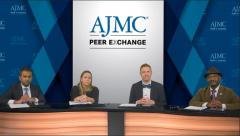
Differences in Care Between Academic and Community Settings in Multiple Myeloma
Dr Lipe shares disparities between academic and community practice settings for patients with MM.
Episodes in this series

Ryan Haumschild, PharmD, MS, MBA: When we talk about some of the treatments and guidelines, some of the reasons we do this is to create consistency of care. But sometimes there are disparities between an academic medical center and a specialist who’s leading trials and having clinic 2 days a week vs a community hematologist who might be seeing a variety of hematologic malignancies and is trying to do the best thing for the patient. You never know what type of patient is going to show up on your schedule. Dr Lipe, what are some of your thoughts about the disparities in care between your academic sites and your community settings that you see?
Brea Lipe, MD: We’ve always had some disparities, but for the most part, any site was able to give any regimen that ever existed. Maybe it took longer in some places to adopt those new therapies, or maybe it took longer to gain the same level of comfort because of the frequency of use. We’re entering a new era in which there’s going to be increasing disparity, and we need to acknowledge that up front. As we get new therapies approved, we have to come up with an a priori mechanism so we can reduce the disparity. I’m speaking specifically to our cellular therapies and our bispecifics that are approved. Some of these have to be administered in a center that’s comfortable treating and managing CRS [cytokine release syndrome].
A lot of times, at least in our region, that ends up being the academic medical center. We are reaching out. Hopefully, we have plans in place so that our patients who have to travel farther have access to these medications. That could mean we start something in Rochester and then they take it back to their site. It could mean that a patient from a long distance away is higher on our list for CAR [chimeric antigen receptor] T-cell therapy. Those are things we’re looking at because we want to acknowledge that these new therapies are likely to create a different level of disparity from what we’ve had to deal with before. We need an a priori mechanism, particularly for our patients in rural settings, which is common where I live. They’re still my patients, whether they live next door and they see me every month or they live 80 miles or 8 hours away. Those providers are still my colleagues, and we all want the same for our patients.
Ryan Haumschild, PharmD, MS, MBA: It’s a growing importance, not only in the capabilities but also when you have so many new emergent agents and studies, for someone to keep up with all that and know exactly how to sequence it all. You’re right that it’s a team-based approach. That’s what we want to do. For someone with any type of vulnerability, if they can’t make it on site, how do we still make sure they get great care? That aligns exactly with the mission that you discussed. How do we leverage our networks? Dr Thertulien, you have an organization that has a large network. Talk to me about how you’re leveraging your network to improve patient care in multiple myeloma.
Raymond Thertulien, MD, PhD: That’s an excellent question. First, we do it through clinical pathways that we’ve discussed. We make it available to our colleagues in the community. Just like Dr Lipe, we have a myeloma forum that meets every month. We discuss the latest data, and sometimes old papers for historical background, to have everybody on the same page. It’s very important. We talked about social determinants of care. We do CAR T cells, but not for myeloma yet because we’ve had COVID-19 issues in terms of supplies. But we’re ramping up to do BiTEs [bispecific T-cell engagers], and these are treatments that our colleagues in the community can’t administer. CAR T BiTEs are administered at certain centers, mainly academic, so we have to find a way to make these treatments available to patients who live far away.
But we need to realize that these are the same patients who can’t come to our center for transplant. These are the disparities that we have in multiple myeloma. These are the things we need to address in every community and every system where we treat patients with myeloma. We have to deal with those, address issues as they come up, and establish protocols and develop resources to make these treatments available to everybody. We have providers as far as Wilmington [Delaware] and Charlotte [North Carolina]. We just had a meeting with our colleagues in Wilmington to establish ways to make those treatments available to their patients.
This is a very important issue that we all need to address within our networks. We’re addressing it partly by making clinical pathways available, so they can choose standardized treatment and a standardized protocol to bring that quality to those patients within the community. When you come to the newer technologies, they may not even understand the science of it. The patients have to come to us so we can explain to them the science before they agree to proceed with such therapy and why such therapy will require them to stay close to that center. There are a lot of resources that need to be developed to allow patients to take advantage of these treatments. We have a lot of work to do where that’s concerned in multiple myeloma.
Ryan Haumschild, PharmD, MS, MBA: A lot of work, but it’s good work ahead.
Raymond Thertulien, MD, PhD: Good work ahead.
Ryan Haumschild, PharmD, MS, MBA: Necessary work.
Transcript edited for clarity.
Newsletter
Stay ahead of policy, cost, and value—subscribe to AJMC for expert insights at the intersection of clinical care and health economics.






























































